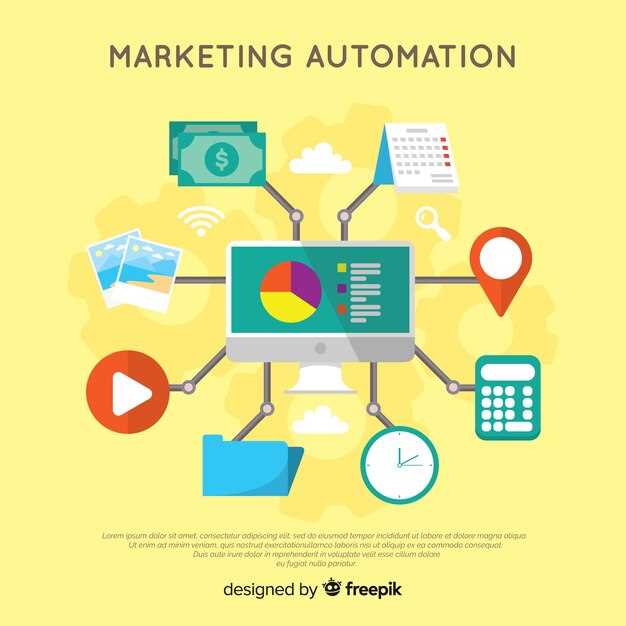Identify the top three repetitive tasks in your department and automate them to shorten cycle times by 20–40%. When you create automated steps, teams spend less time on data entry and more on analysis that drives satisfaction for customers. In many companies, the work is done faster and more consistently, with clear ownership and milestones.
Automation helps streamline workflows across departments like finance, sales, and operations. Across teams, performance improves as routine steps run without manual input, reducing errors and freeing staff to focus on impact. A case study from amazon shows how automations freed teams from repetitive tasks, enabling leaders to take on higher-value work.
2025 examples show concrete gains: in finance, automations handle invoicing and reconciliation, cutting days sales outstanding by 20–30% and improving accuracy. In healthcare, automations speed patient intake and data capture, cutting admin time by 25–40% and increasing patient satisfaction. In logistics, automated order processing and label generation shorten fulfillment cycles by about 15–25%.
How to proceed in 2025: run a 4-6 week pilot in one department, pick a platform with intuitive builders, and designate a sponsor and a product owner. Define KPI such as time to complete, error rate, and user satisfaction. Deliver a minimal viable automation first, then add integrations with existing systems so teams see continuous improvements without disruption. This momentum will translate into faster, more confident adoption across departments.
Technology choices should align with data governance and security; technology teams should provide hands-on training to keep staff engaged with automations. Automations should integrate with core systems so delivering reports stays fast and satisfaction stays high. Track metrics on dashboards and report progress to executives in plain language, keeping teams empowered to create real impact.
What Are the Benefits of Automation?
Automate the most repetitive tasks first to cut times and errors by up to 40% in core workflows, delivering quick wins that validate the investment and free teams to tackle higher-value work while keeping processes efficient.
Automation takes on complex routines by standardizing steps, reducing manual handoffs, and enhancing communication between systems and people. Builders of automation imagine scalable models that cover data capture, validation, routing, and escalation, so context follows decisions rather than being re-created.
For inventory and order management, automated alerts, reconciliation, and status updates cut stockouts and overstock, stabilizing throughput and lowering carrying costs. Examples from multiple companies show how automating these loops improves visibility and speed across supply chains.
Automation adds intelligence to operations by enforcing business rules, detecting anomalies, and surfacing problems early. Data quality rises as automatic checks validate inputs at the source, and feedback from users helps fine-tune rules to enhance outcomes.
Beyond efficiency, automation reduces cognitive load and frees people to focus on the goal. It takes away routine cycles and enables faster responses to problems, supporting teams as they evolve and adapt to changing needs.
To maximize impact, set a clear goal, measure outcomes, and iterate. Begin with a high-frequency, low-friction process, capture feedback, and extend automations to new data sources and steps over time, creating a scalable path for companies of all sizes.
Time Savings: Minimize Repetitive Tasks
Recommendation: automate the top three repetitive tasks you already perform manually: payroll approvals, expense reimbursements, and timesheet corrections. Use one tool that integrates with your HRIS and accounting systems to keep data in sync and prevent delays. This reduces errors, lowers payroll expense, and frees the workforce to focus on higher-value work.
First, map the tasks that happen each cycle: approvals, reconciliations, and notifications. Then configure simple strategies like conditional routing, auto-accepts for low-risk requests, and standard templates so members submit consistent data. Some teams see bigger gains when automation also covers vendor invoices. These changes address challenges and reduce manual touchpoints that demand attention from staff. The tool records trails for audit and keeps a log of motion across steps.
Track true improvement with concrete metrics: cycle-time reduction, error-rate drop, and cost savings from automation. For retention, show how consistent processes reduce workload and burnout across the team. As you iterate, they track their feedback and adjust rules on a cadence that fits your team, not a distant plan. Target a 30–50% cycle-time cut in the first two quarters and a 20–40% drop in errors, then expand automation to onboarding and vendor invoices.
Consistency and Compliance: Standardize Procedures
Standardize procedures across departments by adopting a single, role-based SOP framework with clear ownership, versioning, and audit trails; this approach ensures consistency throughout the entire workflow and reduces costly rework.
Establish a payroll processing a tech-aligned SOP with explicit steps for data capture, validation, approvals, and archival, so outputs remain accurate and ready for audits across everyone involved.
Assign owners for each stage and require quarterly reviews with appropriate sign-offs to keep compliance aligned with the goal of consistent outcomes for the company, according to the latest SOP.
Automate where possible to move tasks smoothly between stages, reducing manual errors and cycle times.
Invest in skill development: designate a process owner a validator, and provide short, outcome-focused training episodes to lift the entire skill level across the company. This boosts satisfaction and ensures everyone has the appropriate knowledge to act on the latest SOP.
Track metrics such as time-to-approve, error rate, and user satisfaction; share findings across leadership and teams to keep this effort aligned with the goal of staying competitive, optimizing performance across the organization.
In practice, this framework yields auditable trails and reduces costly rework, and in a ford, where streams of work cross departments, standardization helps.
Cost Reduction: Lower Costs Over Time
Ready to cut costs over time? Launch a focused automation pilot in one department to lock in quick wins and establish a measurable baseline.
Map the mundane tasks, capture issues, and build solutions that can be reused across hundreds of tasks. Track outcomes to confirm improved performance and save cycle time across the organization.
Focus targets only the tasks that drive the majority of cost, so the impact is clear.
As you scale, the real impact appears between departments as standardized workflows reduce rework and prevent bottlenecks. Although automation tackles repetitive steps, keep intelligent checks to handle edge cases and policy requirements.
To maintain momentum, keep tracked metrics and ready-to-implement suggestions. The department can reuse templates and ready-made solutions, shortening the path to value. This approach works especially well for mundane back-office tasks that rarely add strategic value.
Done right, the approach scales across other processes and creates a reproducible savings pattern. This game of cost discipline rewards disciplined tracking and continuous improvement.
| Levers | Expected impact | Timeframe | Poznámky |
|---|---|---|---|
| RPA and workflow orchestration | 60–70% reduction in manual data entry; fewer errors | 8–12 weeks | Templates can be extended to other processes |
| Self-service portals | Queue time down; tasks completed without escalation | 6–10 weeks | Requires clear data and user training |
| Intelligent routing | Faster decisions between teams | 4 weeks | Maintain human oversight for exceptions |
| Automation governance | Consistency across hundreds of tasks | Ongoing | Regular reviews prevent drift |
In practice, joseph documented a routine onboarding step where mundane tasks dropped from 60 minutes to 5 minutes after automation. The real savings were tracked in monthly cost reports and confirmed by department leadership, encouraging other teams to replicate the approach.
Scalability and Adaptability: Handle Growth and Peaks
Start by mapping peak demand patterns and configuring an elastic workflow that expands capacity automatically. Use analytics to forecast load and set thresholds so you can increase responsiveness while reduced manual work. This approach delivers the best advantage during growth, and it helps spread traffic across channels before latency spikes hit. Automated provisioning yields reduced firefighting time, requiring less time from teams and keeping focus on high-value work.
rule-based routing keeps decisions consistent: route high-priority items to fast paths, batch mundane tasks, and spread load across parallel channels. Identify inefficiencies in the workflow and automate mundane steps, automating where possible to avoid repetitive toil. Look at behavior to tune the rules and ensure decisions reflect real needs. Before any change, validate on staging and document the řešení you implement. dont rely on guesswork; design for repeatable outcomes so work remains predictable.
Adopt a decoupled, event-driven architecture with queues and scalable storage to prevent bottlenecks. Automating data collection and analytics identify inefficiencies in real time, guiding decisions and tuning the workflow. When bursts arrive, increase parallel processing and route tasks by policy rather than ad hoc actions. Rely on technology that supports auto-scaling and graceful backpressure, so a single spike doesn’t derail the entire process. Behavior-aware tuning helps ensure the same rules stay effective as conditions change.
Look to real-world usage: amazon and other cloud-native platforms spread traffic across regions, keeping service levels stable during peaks. Build guardrails and cost controls; dont overshoot capacity, and start with conservative limits that expand as demand grows. Track latency, throughput, queue depth, and error rate to confirm you meet targets and to identify where adjustments yield the best outcomes.
In practice, a scalable and adaptable workflow reduces downtime, improves responsiveness, and delivers predictable costs under load. By leveraging analytics-driven decisions, you can identify and fix inefficiencies quickly, turning growth into a controlled process. The same framework supports fast adaptation to changing behavior and new rules, ensuring you dont stall when demand spikes and giving your team the best chance to succeed.
Data Quality and Insight: Improve Decision-Making from Automation

Implement a centralized data quality guardrail across all automated workflows to ensure decisions rely on reliable data. Validate data at entry and during each step, and feed clean data into analytics and reporting to shorten cycle times and increase trust.
- bridge data from salesforce to the data warehouse using a canonical schema to ensure the same fields align across sources, reducing mapping errors that slow decisions.
- Establish a monthly data quality score by source and a lightweight reporting pack that highlights completeness, currency, and timeliness for the workforce.
- Apply routine validations at ingestion and along the motion of data through the workflow to catch anomalies early and keep data moving smoothly, so teams down the line can act quickly.
- Automate deduplication, normalization, and validation for hundreds of critical fields, and escalate only when issues are non-trivial.
- Use sophisticated anomaly detection to flag unusual patterns, heavily reducing manual review in complicated data streams.
- Share feedback from data consumers with the data team and agency partners to continuously improve quality rules and coverage.
- Build intimacy with data by including business users in rule-tuning sessions and by providing transparent reporting that tells where gaps were found.
- Implement a lightweight data governance routine that assigns owners, SLAs, and a monthly cadence for data quality review.
- Develop a simple incident playbook for common issues, so the workforce can respond quickly without interrupting ongoing operations.
- Initiate a Salesforce integration pilot with a few teams; track major metrics such as accuracy improvements and time-to-insight on a monthly basis.

 Workflow Automation Explained – Benefits and 2025 Examples">
Workflow Automation Explained – Benefits and 2025 Examples">
